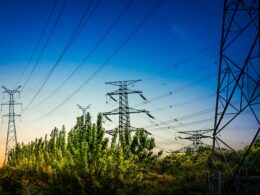The global green economy rebounded strongly in 2023 from a sharp decline in 2022, with its market capitalisation reaching $7.2 trillion in Q1 2024. This has been shown in a study by the London Stock Exchange (LSEG) named ‘Investing in the green economy 2024’ assessing over 19,000 companies globally.
The study reveals that if considered a standalone sector, the green economy would have been the second-best-performing industry, represented by the FTSE Environmental Opportunities All Share (EOAS) Index, over the last 10 years, second only to the Technology sector. In 2023, the EOAS rose 32%, compared to the 22% increase of its benchmark, the FTSE Global All Cap Index.
Energy Efficiency has been the best-performing and largest green sector (46% of the green economy and 30% of green bond proceeds), covering areas like efficient IT equipment and green buildings. Conversely, Renewable Energy has lagged, underperforming in 2023.
According to the study, the technology sector is by far the largest, with a market capitalisation of $2.3 trillion, while the automobile sector boasts the highest green penetration rate at 42%. Over 50 developed and emerging markets contribute to the green economy, with the US leading in 2024 due to the size of its equity market and major companies like Tesla. Taiwan follows, driven by the semiconductor industry, and then China.
In the fixed-income asset class, the green bonds market maintained momentum with $540 billion issued in 2023, despite high interest rates. Although annual issuance in 2023 was still below the 2021 peak, it rebounded from the lower levels seen in 2022. Newly issued green bonds now constitute around 6% of total annual bond offerings, but outstanding green bonds only account for 2% of the bond market, which reached $2.5 trillion in Q1 2024. Meanwhile, carbon-intensive bond issuance is about 2.5 times higher than green bond issuance each year.
The growth of digital technologies like artificial intelligence (AI) and data centres, could drive further development in the green economy as tech giants, concerned with their significant energy consumption and environmental footprints, are becoming the largest buyers of renewable energy. Additionally, there is substantial potential for growth in energy efficiency improvements in areas such as chips and servers, cooling systems, hyperscale data centres, and energy-demand management, according to LSEG.





















